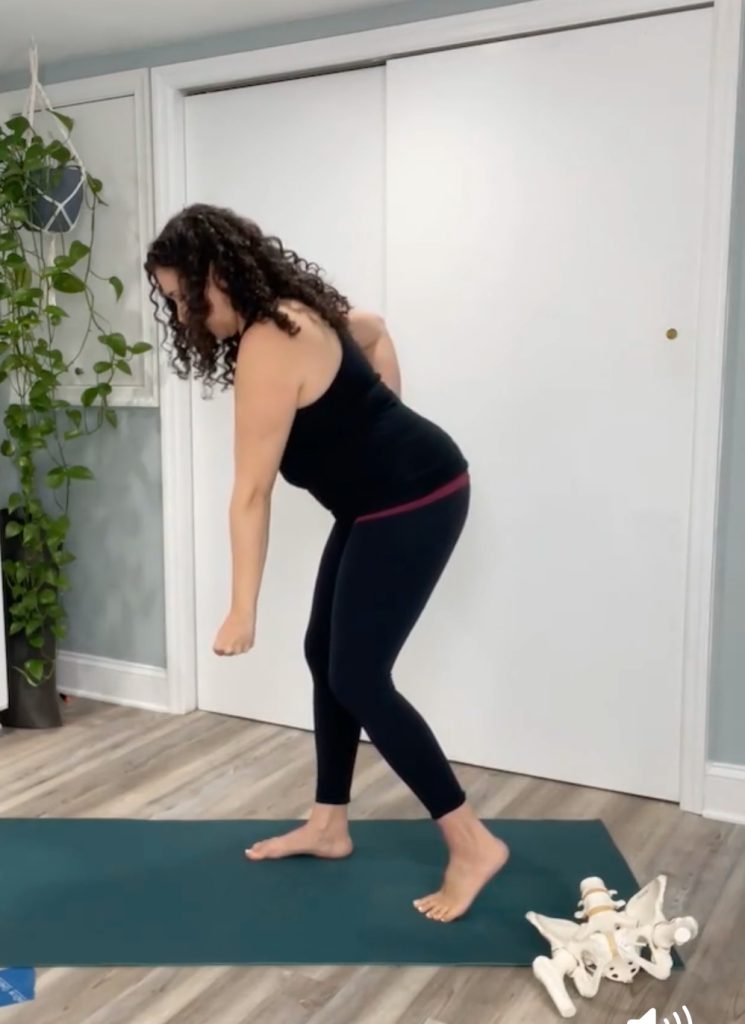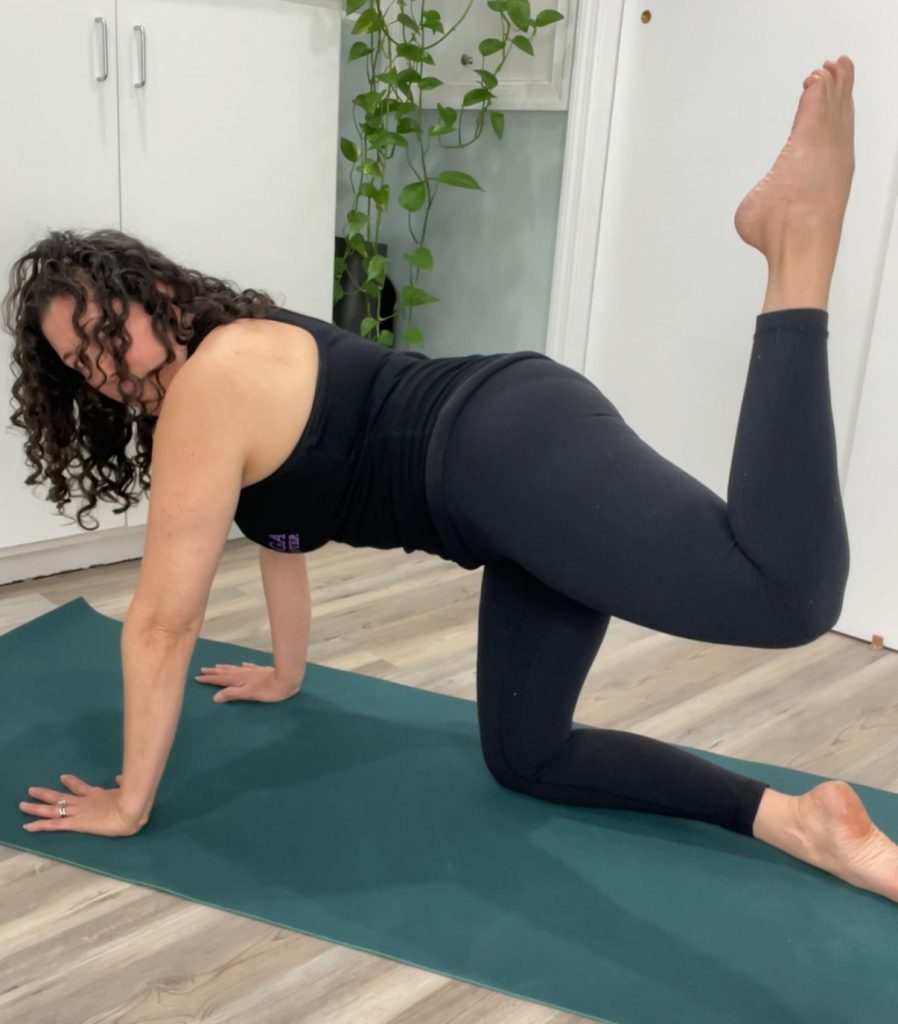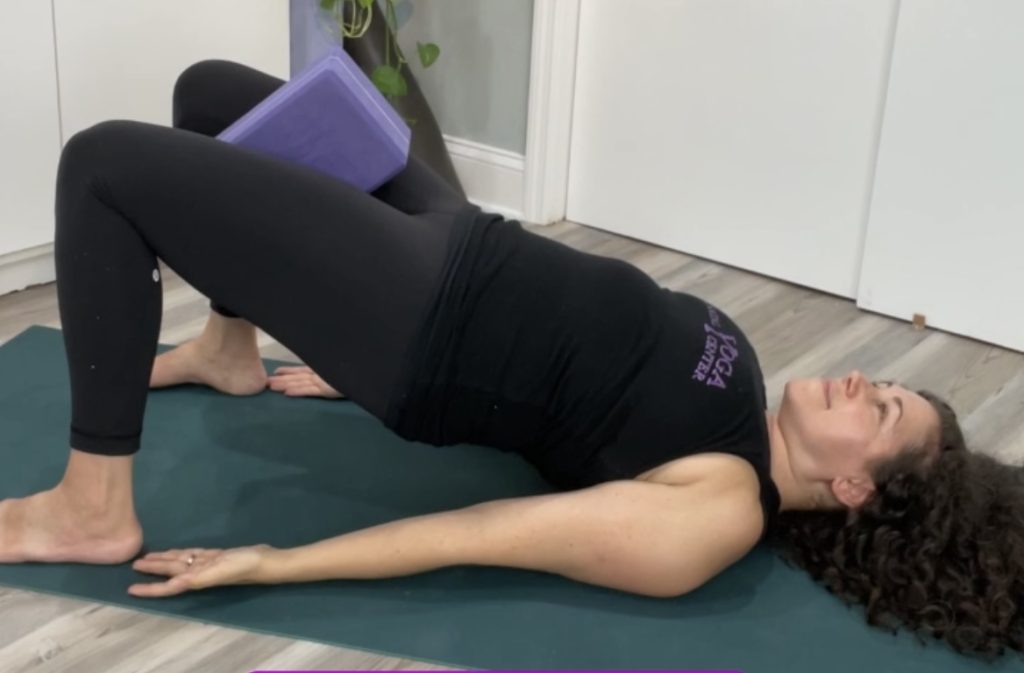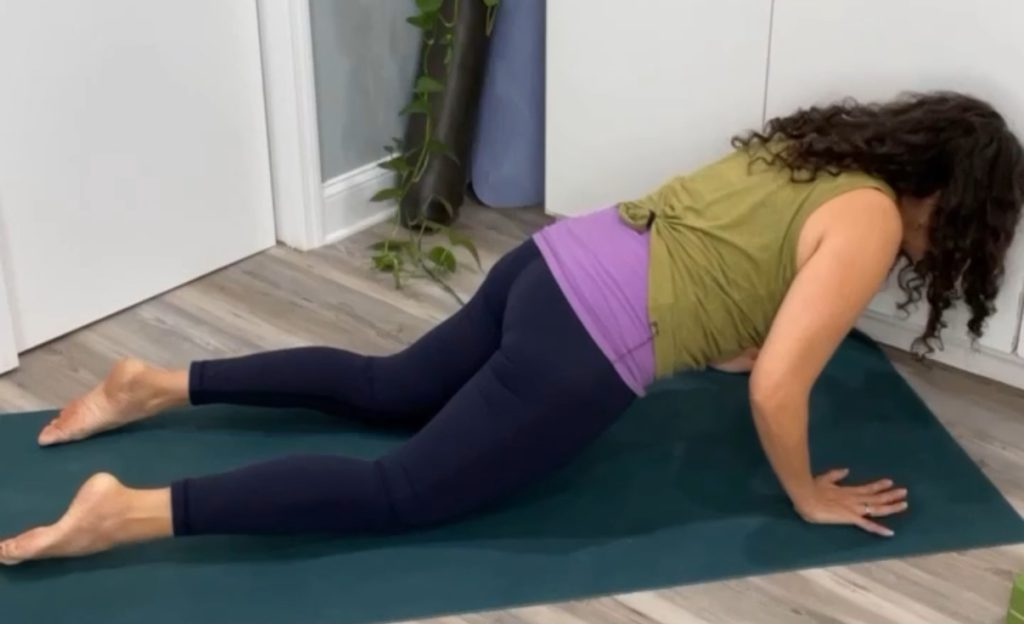Navigation
Prenatal yoga is usually mistaken for simply mild stretching and restorative poses. Whereas rest definitely performs a job, at Prenatal Yoga Heart (PYC) we strategy prenatal yoga with a much wider function. Our lessons are designed to supply bodily problem, assist construct energy, and develop the coping abilities wanted to handle discomfort and powerful sensations—beneficial instruments each throughout being pregnant and labor.
One other important purpose of our lessons is to assist deliver the physique into stability. Being pregnant creates main postural shifts that usually result in muscular imbalances. Many college students develop an anterior pelvic tilt with flared ribs, or the alternative sample with the hips pushed ahead and the tailbone tucked underneath. These patterns can result in again and shoulder ache, pelvic flooring dysfunction and complications. To counteract these tendencies, we deal with strengthening the posterior chain—glutes, hamstrings, again, and deep core.
In each PYC prenatal yoga class, we weave strengthening poses all through the vinyasa stream. Let’s check out a few of our favourite purposeful energy strikes and the way they help pregnant our bodies.
Romanian Deadlift (RDL) / Hip Hinge

This foundational motion helps defend the decrease again by encouraging mobility by the hips fairly than the backbone. RDLs strengthen the glutes and hamstrings, that are key elements of the posterior chain and important for pelvic help and postural alignment. Particularly throughout being pregnant, when weight distribution shifts, creating sturdy hip hinging mechanics helps maintain the backbone impartial and cut back pressure on the again and pelvis.
Learn how to do it:
- Stand with toes hip-width aside, knees gentle
- Place arms on hips or behind your head
- Hinge on the hips, sending sit bones again
- Preserve backbone impartial and chest lifted
- Press by heels to return to standing, participating glutes
- You too can do it with a “kickstand” stance to make the entrance leg work much more!
Donkey Kicks

Donkey kicks are a easy but highly effective strategy to goal the gluteus maximus, help hip extension, and stabilize the pelvis. Strengthening this space helps cut back sacroiliac joint discomfort and helps core management. It’s particularly useful in countering the ahead shift in posture that may happen in being pregnant, preserving the hips balanced and the decrease again supported.
Right here’s tips on how to do it!
- Start in tabletop, backbone impartial
- Bend one knee 90°, raise heel towards ceiling
- Keep away from overarching your again
- Decrease with management; repeat 10–15 reps per facet
- Modify with blocks underneath forearms or sub with bridge if wanted
*Modify by placing blocks underneath forearms for college students with wrist points.
*For college kids with SI (sacroiliac) or pubic ache, skip this one and do bridge with a block as an alternative.
Bridge with Block

Bridge pose works a number of muscle teams directly, making it an excellent all-in-one strengthening train. It tones the glutes and hamstrings, and when a block is added between the thighs, it additionally prompts the adductors (interior thighs). This pose helps keep a lengthened backbone and managed pelvis—key for supporting each the low again and pelvic flooring throughout being pregnant.
Right here’s tips on how to do it.
- Lie in your again, knees bent, toes flat
- Place a block between your thighs
- Squeeze block and raise hips specializing in lengthening the decrease again and taking your tailbone in direction of your knee pits.
- Decrease with management and repeat
Reverse Clamshell
Reverse clamshells are particularly necessary for pregnant and postpartum our bodies as a result of they encourage inside rotation of the thigh bones. This motion helps widen the sit bones and lengthen the pelvic flooring. On the identical time, reverse clams goal the often-neglected gluteus medius and minimus, enhancing lateral hip energy and contributing to pelvic stability, supporting a extra purposeful beginning and minimizing rigidity within the pelvic flooring.

Right here’s tips on how to do it!
- Lie in your facet, knees bent and stacked
- Place a block or towel between knees
- Raise and decrease prime ankle whereas preserving knees urgent in
- Stack hips and shoulders; elongate backbone
- Add a resistance band for extra problem
Scapula Push-Ups
Scapula push-ups are a mild but efficient strategy to strengthen the higher again and enhance posture—each important for balancing the adjustments of being pregnant and the bodily calls for of early parenthood (good day, baby-wearing and feeding!). This motion builds the serratus anterior, a key muscle for shoulder stability, which may cut back pressure within the neck and shoulders, help spinal well being and cut back complications.
Right here’s tips on how to do it!
- In tabletop, keep straight arms
- Press your arms into the ground
- Inhale and draw your shoulder blades collectively
- Exhale widen your shoulder blades aside
- Preserve head and backbone nonetheless, isolating higher again motion. This isn’t cat/cow
Reverse Limb Extension (Hen Canine)
This motion strengthens deep core muscle mass, spinal stabilizers, and the posterior chain, enhancing general coordination and pelvic-lumbar stability. Hen Canine promotes stability and alignment, which helps forestall low again ache, helps each day motion, and enhances core integrity—particularly necessary throughout being pregnant and postpartum when the physique is working more durable to keep up equilibrium.

Right here’s tips on how to do it!
- Begin in tabletop, backbone lengthy
- Prolong one leg again and reverse arm ahead
- Preserve hips sq., core engaged
- Maintain, then return to heart and swap sides
- Modify by touching toes/fingertips to flooring or doing one limb at a time
If in case you have SI or pubic ache, maintain the again leg down and picture urgent it upward. This may create an isometric contraction of the hamstring and glute and you’ll nonetheless get the profit for the pose with out inflicting pelvic ache.
Half Chaturanga with Transverse Belly (TA)Respiratory
This transfer combines breath and energy coaching to soundly have interaction the transverse abdominis (deep core). It builds higher physique energy, helps spinal alignment, and teaches tips on how to exhale with management, an necessary instrument for labor and postpartum therapeutic. Practising chaturanga with targeted respiratory additionally helps college students discover ways to handle intra-abdominal stress and stabilize the trunk with out overstraining.

Right here’s tips on how to do it!
- From modified plank with a block between the thighs.
- Exhale like blowing out candles whereas bending your elbows, hugging them into ribs
- Preserve backbone lengthy, keep away from over arching your again.
- Draw your tailbone barely downward towards the block with will assist to softly have interaction your core
- Press again to begin with out collapsing shoulders
- Strive on the wall for extra help or if you’re doming or baring down in your pelvic flooring.
Last Ideas: Why Strengthening Issues in Prenatal Yoga
At PYC, we imagine prenatal yoga ought to do extra than simply assist college students stretch and calm down—it ought to put together them bodily, mentally, and emotionally for the beginning and parenting journey. Strengthening the physique—particularly the posterior chain and deep core—creates higher alignment, reduces discomfort, and empowers our college students with the instruments they should really feel resilient and supported.
By integrating these sorts of poses into your prenatal observe, you’re not solely constructing energy—you’re constructing confidence, physique consciousness, and long-term well-being.
To study extra concerning the Prenatal Yoga Heart and the lessons that we provide. Click on beneath to view our class schedule.
Associated Studying & Listening
Podcast: Energy Coaching for Being pregnant, Start and Past with Nicole Scheitlin
Podcast: Start Circulate and Steadiness with Gail Tully of Spinning Infants®
What’s the Distinction Between a Prenatal Yoga Class and a Yoga Class Modified for Being pregnant?

